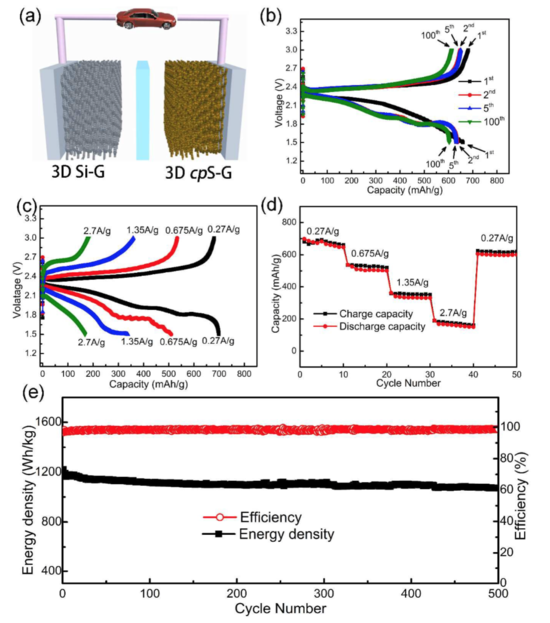
Top: Fermi contours with Rashba splitting, and non-equilibrium spin accumulation resulting from a shift of Fermi contours by spin injection. Bottom left: Experimental setup for the spin pumping measurement. Bottom right: Schematic of spin-to-charge current conversion at the Cu/Bi2O3 interface. Spin currents are generated by spin pumping from a Py layer in ferromagnetic resonance to a Cu layer and reach a Cu/Bi2O3 interface. Then, the spin-to-charge current conversion occurs owing to the spin-momentum locking at the Rashba interface.

Electrochemical performances of full lithiated silicon-sulfur battery built from 3D cpS-G networks cathode and 3D lithiated Si-G anode. a) Schematic illustration of a new configured lithiated silicon-sulfur battery onto 3D graphene networks. b) Selected voltage profiles of lithiated silicon-sulfur battery from 1st to 100th at 0.27 A g-1 based on the total mass of cathode and anode). c) Selected voltage profiles of lithiated silicon-sulfur battery at various current densities from 0.27 to 2.7 A g-1. d) Rate capabilities of Si-S battery and e) long cycle performances of full lithiated silicon-sulfur battery built on 3D graphene